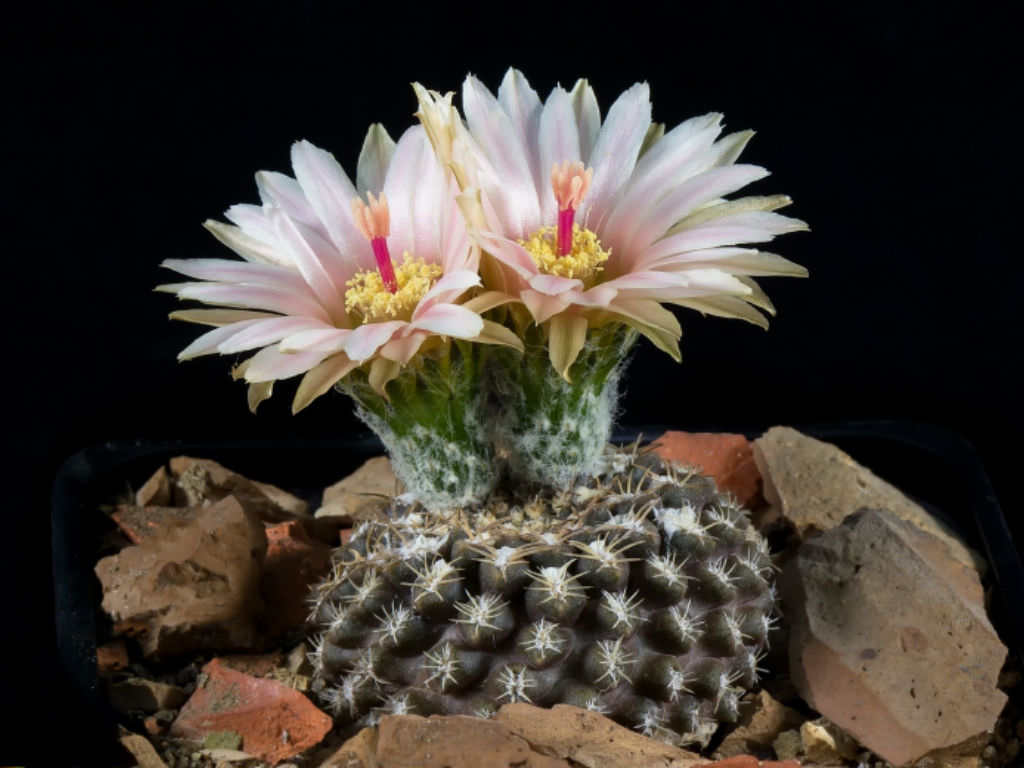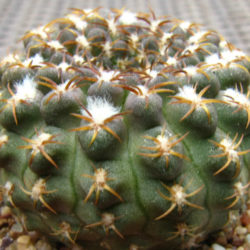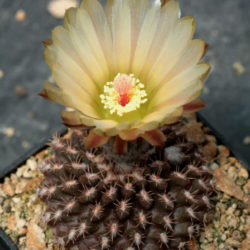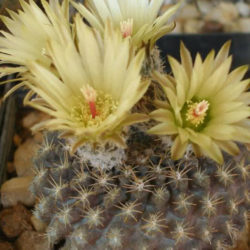Scientific Name
Eriosyce odieri (Lem. ex Salm-Dyck) Katt.
Synonym(s)
Chilenia odieri, Chileorebutia odieri, Echinocactus odieri, Frailea odieri, Hildmannia odieri, Neochilenia odieri, Neoporteria odieri, Thelocephala odieri
Scientific Classification
Family: Cactaceae
Subfamily: Cactoideae
Tribe: Notocacteae
Genus: Eriosyce
Description
Eriosyce odieri is a small geophytic cactus with a subglobular stem with tubercles arranged in rows on 18 to 21 vertical ribs. The stem is up to 2 inches (5 cm) in diameter, with a flattened apex, and is often spineless in mature specimens. It rarely produces offsets. The color of the stem varies from grayish-green to reddish, purplish, or brownish when grown in full sun. Spines are yellowish, white, or brownish, up to 0.2 inches (5 mm) long, and appressed against the tubercles. Each areole bears 6 to 12 radial spines. The central spines are usually absent.
The flowers are funnel-shaped, with pericarpel covered with scales and wool, and have tepals that vary in color from whitish and yellow to orangish and pinkish. They appear in summer, usually when the stem is between 0.8 and 2.4 inches (2 and 6 cm) in diameter.
Origin
Eriosyce odieri is native to Chile (Antofagasta Region and Atacama Region).

Hardiness
USDA hardiness zone 9b to 11b: from 25 °F (−3.9 °C) to 50 °F (+10 °C).
How to Grow and Care
Eriosyce requires intense sun exposure to develop good spinal growth but tolerates light shade. Therefore, some light shadows may be useful on the hottest summer days.
A rich, fast-draining cactus mix is ideal. Good drainage is essential for health.
During the summer, water the cactus every two weeks or slightly less often, depending on how moist the soil remains. In the winter rest period, cut watering back to once a month, or in humid areas, not at all. One of the key factors in success with these cacti is avoiding any hint of wet soil. Because their root systems are weak, they are especially prone to root rot, eventually killing your plant.
During the summer, regular doses of cactus fertilizer will help it grow its best. However, use diluted fertilizer for the best results.
See more at How to Grow and Care for Eriosyce.
Links
- Back to genus Eriosyce
- Succupedia: Browse succulents by Scientific Name, Common Name, Genus, Family, USDA Hardiness Zone, Origin, or cacti by Genus
Photo Gallery
Click on a photo to see a larger version.


